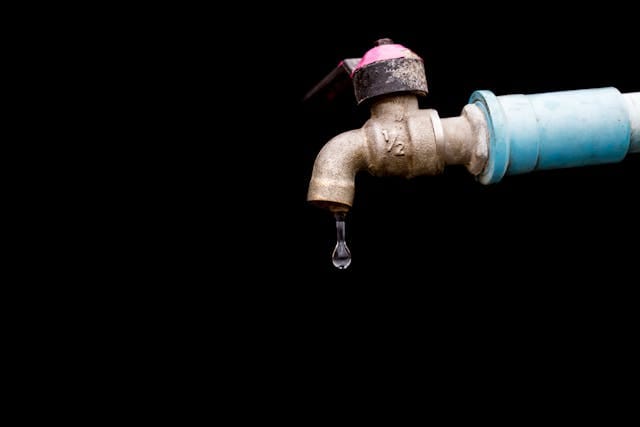Email: info@encanovan.com | Phone: (604) 764-2031
How to test your house for heat loss?

How to Test Your House for Heat Loss: A Complete Guide for Homeowners
Heat loss happens when warm air escapes from your house while cold air sneaks in through gaps in the building envelope. This process drives up energy bills and affects indoor comfort throughout your home. Homeowners in Vancouver and the Greater Vancouver area deal with this challenge whether they live in older properties or newly constructed ones. Even modern homes may have weaknesses in insulation or air sealing that allow precious heat to escape.
Your home’s building envelope includes walls, roofs, floors, windows, and doors that separate indoors from the outside environment. Each component plays a role in keeping heat inside where it belongs. As energy technology advances, even homes designed with efficiency in mind may develop problems without proper maintenance over time. The constant movement of heat drives homeowners to find where energy is being wasted.
Why should you care about testing your house for heat loss?
Identifying these problem areas helps improve energy efficiency and reduces monthly utility costs. This guide covers various methods for detecting how to test your house for heat loss, from simple DIY approaches like visual inspections and hand tests to advanced techniques using thermal imaging cameras. We’ll also discuss when professional energy audits make the most sense. By the end, you’ll know practical ways to spot and address weaknesses in your home’s thermal barrier.
Common Areas Where Your Home Loses Heat

Understanding where homes typically lose heat guides your inspection efforts effectively. Many structures have hidden weak spots that cause significant energy waste. Even well-maintained houses can suffer from tiny air leaks or inadequate insulation that work together to undermine comfort. The key is systematically checking areas where thermal bridges and air infiltration commonly occur.
Air Leaks and Drafts Create Major Problems
Air leaks and drafts create major problems for homeowners. Small gaps around windows, doors, electrical outlets, pipes, and foundations allow cold air to infiltrate your living spaces. An opening as small as one-eighth inch under a door equals the heat loss of a 2.4-inch hole punched in your wall. These leaks seem minor individually, but when added together across your entire home, they become major sources of energy waste and higher heating bills.
Common leak locations include window and door frames, electrical penetrations, plumbing entries, and foundation connections. Weather stripping deteriorates over time, caulk shrinks and cracks, and settling can create new gaps. Regular inspection and sealing of these areas significantly reduces unwanted air exchange between indoor and outdoor environments.
Inadequate Insulation Allows Heat Transfer
Many homes lack sufficient insulation in walls, attics, roofs, floors, basements, and crawl spaces. Poor insulation means warm air escapes more rapidly, especially in upper areas where hot air naturally rises. Homes with thin or deteriorated insulation expose occupants to temperature fluctuations and uneven indoor climates throughout different rooms.
Insulation performance decreases when materials become compressed, wet, or damaged by pests. Original installations may not meet current energy standards, particularly in older homes built before modern efficiency codes. Checking insulation thickness and condition helps identify areas needing upgrades to recommended R-values for your climate zone.
Heating System and Ductwork Inefficiencies
Older HVAC units and leaky ductwork waste conditioned air before it reaches your living spaces. Dirty filters force heating equipment to work harder while delivering less comfort. Poorly sealed ducts can lose 20-30% of heated air in unconditioned spaces like attics, basements, and crawl spaces.
How much energy does your heating system actually waste?
Maintenance issues compound these problems over time. Systems operating beyond their optimal efficiency range consume more energy while providing inconsistent temperatures. Upgrading to modern, properly sized equipment and sealing ductwork prevents substantial heat loss during distribution throughout your home.
DIY Methods to Test Your House for Heat Loss
Many homeowners can identify heat loss problems using basic, affordable techniques. Taking a systematic approach around your property helps uncover hidden drafts and insulation deficiencies that increase energy costs. Simple tools and your own senses often reveal issues before they require expensive professional intervention.
Visual Inspection and Hand Testing Techniques

Start testing your house for heat loss with a comprehensive walk-through examination. Look for visible gaps, cracks, or worn sealing material around windows, doors, electrical outlets, and baseboards. Check for daylight showing through closed doors and windows, which indicates air leakage paths.
The hand test provides immediate feedback about air movement. Move your hand slowly along potential problem areas while feeling for temperature changes or air currents. Cold spots near windows or sudden chills around outlets signal heat loss locations. This tactile method works best during cold weather when temperature differences are most pronounced.
Condensation on windows often indicates insulation problems or excessive air leakage. Water droplets form when warm, humid indoor air contacts cold glass surfaces. While some condensation is normal during extreme temperature differences, persistent moisture suggests underlying thermal issues requiring attention.
Smoke and Draft Detection Tests
Incense sticks or small candles help visualize air movement patterns throughout your home. Light the incense and hold it near suspected leak areas like door frames, window edges, and material junctions. Moving smoke or flickering flames reveal air currents that indicate heat loss paths.
Perform these tests during windy conditions with all exhaust fans turned off for best results. The greater pressure difference between indoor and outdoor environments makes air leaks more obvious. Work methodically through each room, paying special attention to areas where different building materials meet.
The dollar bill test checks door and window sealing effectiveness. Close the door or window on a dollar bill, then try pulling it out. If the bill slides easily without resistance, gaps exist that need weatherstripping or adjustment. This simple check works for any movable building component that should seal tightly when closed.
Basic Insulation Assessment Methods
Examine attic insulation to verify adequate thickness and even distribution across joists. Look for gaps around penetrations like pipes, ducts, and electrical cables where insulation may be missing or compressed. Proper coverage should completely fill joist bays without significant thin spots or bare areas.
Wall insulation checks require more caution but provide valuable information. After turning off electrical power, carefully remove outlet cover plates to peek inside wall cavities. Adequate insulation should be visible behind the outlet box. Missing or sparse insulation indicates thermal weak spots needing professional attention.
Basement and crawl space inspections reveal foundation insulation conditions. Check for damaged, compressed, or missing materials that allow heat transfer through floor assemblies. These areas often get overlooked during home maintenance but contribute significantly to overall thermal performance when properly insulated and sealed.
Advanced DIY Testing with Thermal Imaging Technology

Thermal imaging cameras provide detailed heat loss visualization that human senses cannot detect. These devices create colorful temperature maps showing exactly where thermal energy escapes your building envelope. Modern smartphone-compatible units make this professional-grade technology accessible to average homeowners.
Understanding How Thermal Cameras Work
Thermal imaging devices detect infrared radiation emitted by all surfaces above absolute zero temperature. The camera converts this invisible energy into visual representations using color coding. Warmer areas typically appear as red, orange, or yellow shades, while cooler zones display as blue, purple, or black colors.
When testing your house for heat loss with thermal imaging, temperature differences reveal insulation gaps and air leakage paths. Warm spots on exterior walls during cold weather indicate heat escaping from inside. Cold areas on interior surfaces suggest inadequate thermal barriers or air infiltration from outdoors.
The technology works by measuring surface temperatures rather than air temperatures. This distinction helps identify thermal bridges where building materials conduct heat through the building envelope. Concrete, steel, and wood framing members often create thermal pathways that bypass insulation systems.
Affordable Thermal Imaging Options for Homeowners
Smartphone-compatible thermal cameras have made this technology budget-friendly for residential energy testing. The FLIR One thermal camera starts around $220, while the more advanced FLIR One Edge Pro typically costs about $550. These devices plug directly into your phone and use mobile apps for image capture and analysis.
Professional-grade handheld units offer higher resolution and accuracy but cost significantly more. For basic home heat loss testing, smartphone attachments provide sufficient detail to identify major thermal issues. Many models include measurement tools and analysis features that help quantify temperature differences across surfaces.
Rental options exist for homeowners who prefer not to purchase thermal equipment. Some tool rental shops and home improvement stores offer thermal cameras for short-term use. This approach works well for one-time assessments or periodic energy audits of your property.
Tips for Effective Thermal Imaging Results
Optimal thermal imaging requires at least 10°C (20°F) temperature difference between indoor and outdoor environments. Cold days after several hours of heating provide ideal conditions for detecting heat loss patterns. Avoid testing immediately after sunrise or sunset when solar heating affects exterior surface temperatures.
Scan both interior and exterior surfaces methodically to create comprehensive thermal maps. Move slowly while maintaining consistent distance from target surfaces for accurate temperature readings. Focus on walls, windows, doors, and ceiling areas where thermal issues commonly occur.
Is your thermal scan revealing unexpected heat patterns?
Document findings with reference photographs and detailed notes for future comparison. Save thermal images with location descriptions and ambient conditions recorded during testing. This documentation helps track improvements after implementing energy efficiency upgrades and provides baseline data for ongoing thermal performance monitoring.
Professional Home Energy Audits: Expert Heat Loss Testing

While DIY methods provide valuable initial insights, professional energy audits offer comprehensive thermal analysis using advanced equipment and expertise. Certified auditors bring specialized tools and training that identify subtle heat loss issues missed by basic testing methods. This thorough approach proves especially beneficial when planning major renovations or heating system upgrades.
What Professional Energy Audits Include
Certified energy auditors conduct systematic evaluations using sophisticated diagnostic equipment. Blower door tests measure overall building airtightness by pressurizing or depressurizing your home while recording air leakage rates. This quantitative data helps prioritize sealing efforts for maximum energy savings impact.
Professional thermal imaging surveys cover entire building envelopes with high-resolution cameras. Auditors systematically scan interior and exterior surfaces while documenting temperature variations that indicate insulation defects or air leakage paths. Their trained eyes recognize subtle thermal patterns that untrained users might overlook.
Combustion safety testing ensures heating appliances operate properly without creating carbon monoxide hazards. Auditors check draft conditions, flue gas spillage, and indoor air quality impacts from combustion equipment. This safety assessment adds important value beyond simple heat loss detection.
The complete audit process takes two to eight hours depending on home size and complexity. Professional assessments typically cost between $100 and $1,000, with an average price around $437. Detailed reports include prioritized recommendations and potential rebate opportunities for efficiency improvements.
Benefits of Professional Thermal Analysis
Expert auditors bring precision that DIY methods cannot match when testing houses for heat loss. Their calibrated equipment and systematic procedures identify minor thermal bridges, duct leakage, and insulation gaps that affect overall energy performance. Professional documentation supports rebate applications and contractor work specifications.
Comprehensive energy audits often reveal 5-30% potential energy cost reductions through targeted improvements. These savings projections help homeowners prioritize upgrades based on cost-effectiveness and payback periods. Professional recommendations consider local climate conditions and building codes for optimal results.
Safety considerations add significant value to professional energy assessments. Auditors identify moisture problems, ventilation deficiencies, and combustion hazards that could affect occupant health. These findings often justify audit costs through avoided safety issues and improved indoor air quality.
When should you consider hiring professionals instead of DIY testing?
Major renovation projects benefit from professional thermal analysis to guide insulation and air sealing specifications. Heat pump installations require accurate heat loss calculations for proper equipment sizing. Professional audits provide engineering-quality data that supports these significant investments in home energy systems.
Solutions for Addressing Heat Loss Problems

Once you’ve completed testing your house for heat loss, the next step involves implementing targeted solutions that improve thermal performance. Effective repairs address both air leakage and insulation deficiencies based on your specific findings. Prioritizing improvements by cost-effectiveness maximizes energy savings within available budgets.
Air Sealing Strategies That Work
Caulking provides permanent solutions for gaps around stationary building components like window frames, door frames, and penetrations through walls. Choose appropriate caulk types based on location and expected movement. Exterior applications require weather-resistant formulations that maintain flexibility through temperature cycles.
Weatherstripping seals moving parts like doors and operable windows that must open and close repeatedly. Replace worn strips with appropriate materials matched to gap sizes and door types. Foam gaskets behind electrical outlet covers stop air leakage through interior wall penetrations in unconditioned spaces.
Professional air sealing services handle complex leakage paths that require specialized materials and techniques. Spray foam applications seal irregular cavities and penetrations that traditional materials cannot address effectively. These comprehensive approaches often provide better long-term results than DIY efforts alone.
Insulation Improvement Options
Adding attic insulation provides excellent returns on investment since heat naturally rises toward roof areas. Bring existing insulation up to recommended R-values for your climate zone using blown-in cellulose, fiberglass batts, or spray foam applications. Seal air leakage paths before installing additional insulation for maximum effectiveness.
Wall insulation upgrades require more extensive work but address major thermal weak spots in building envelopes. Injection foam, blown-in cellulose, or complete wall renovation approaches each offer different cost and performance trade-offs. Professional assessment helps determine which method suits your specific situation best.
Basement and crawl space insulation prevents heat loss through floor assemblies while improving comfort in lower levels. Rigid foam boards, spray foam, or batt insulation applied to foundation walls creates thermal barriers between conditioned and unconditioned spaces. Proper vapor barriers prevent moisture problems in these applications.
Duct insulation and sealing prevents conditioned air loss in unconditioned spaces like attics, basements, and crawl spaces. Professional duct sealing using specialized equipment often achieves better results than manual tape and mastic applications. These improvements ensure heated air reaches intended destinations efficiently.
Conclusion
Testing your house for heat loss provides the foundation for creating a more comfortable and energy-efficient home environment. Combining simple DIY inspection methods with advanced thermal imaging techniques gives you comprehensive insight into where precious energy escapes your building envelope. Professional energy audits add expert analysis and safety assessments that complete the thermal evaluation process.
Taking action based on your heat loss testing results pays dividends through lower energy bills and improved indoor comfort year-round. Small improvements like air sealing and weatherstripping often provide immediate results, while larger insulation projects deliver long-term energy savings. The systematic approach outlined here ensures you address the most significant thermal issues first for maximum impact.
Regular thermal assessments help maintain your home’s energy performance over time as materials age and settle. Whether you choose DIY methods or professional services, consistent attention to heat loss prevention keeps your property operating efficiently. Encano Plumbing & Drainage Ltd. supports these energy efficiency efforts through expert leak detection services and water heater evaluations that complement comprehensive thermal assessments.
Frequently Asked Questions
How Much Heat Can a House Lose Through Unsealed Gaps?
Small unsealed gaps create surprisingly large heat losses when combined throughout an entire home. Research shows that a one-eighth inch gap under a door equals the thermal impact of a 2.4-inch hole in your wall. Multiple small leaks often add up to leaving a window open continuously during heating season.
Can Encano Plumbing & Drainage Ltd. Help with Heat Loss Related to Plumbing?
Yes, Encano Plumbing & Drainage Ltd. provides advanced leak detection services that identify hidden water system issues contributing to heat loss problems. Our experienced technicians also offer water heater assessments and repairs that ensure efficient hot water delivery throughout your home, supporting overall thermal comfort and energy efficiency goals.




